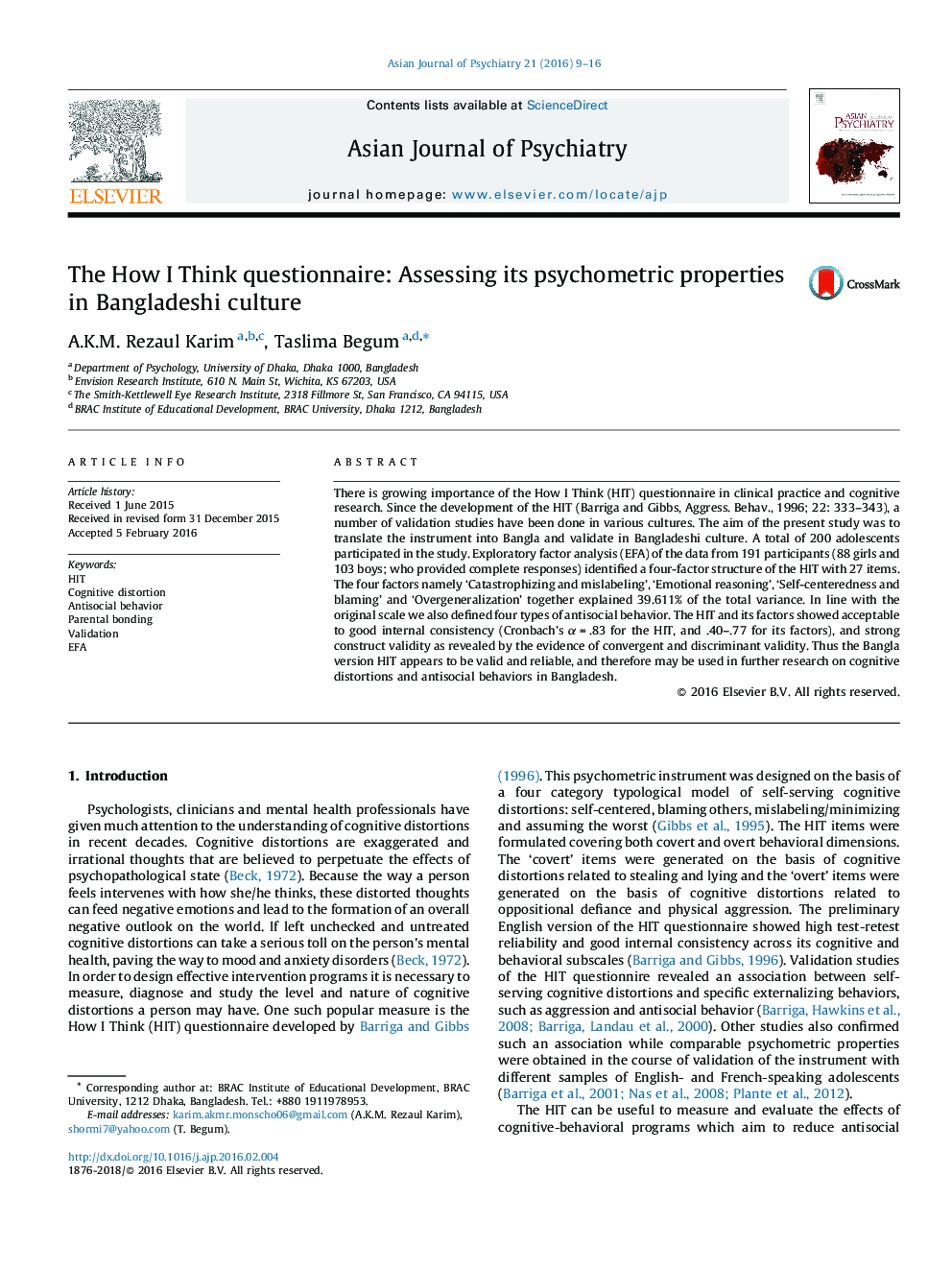| کد مقاله | کد نشریه | سال انتشار | مقاله انگلیسی | نسخه تمام متن |
|---|---|---|---|---|
| 317293 | 1432582 | 2016 | 8 صفحه PDF | دانلود رایگان |
• We validated the ‘How I Think’ questionnaire in Bangladeshi culture.
• Exploratory factor analysis identified a four-factor structure of the HIT.
• The four factors together explained 39.611% of the total variance.
• Like the original scale the Bangla HIT measures four types of antisocial behavior.
• The Bangla HIT demonstrated good construct validity and internal consistency.
There is growing importance of the How I Think (HIT) questionnaire in clinical practice and cognitive research. Since the development of the HIT (Barriga and Gibbs, Aggress. Behav., 1996; 22: 333–343), a number of validation studies have been done in various cultures. The aim of the present study was to translate the instrument into Bangla and validate in Bangladeshi culture. A total of 200 adolescents participated in the study. Exploratory factor analysis (EFA) of the data from 191 participants (88 girls and 103 boys; who provided complete responses) identified a four-factor structure of the HIT with 27 items. The four factors namely ‘Catastrophizing and mislabeling’, ‘Emotional reasoning’, ‘Self-centeredness and blaming’ and ‘Overgeneralization’ together explained 39.611% of the total variance. In line with the original scale we also defined four types of antisocial behavior. The HIT and its factors showed acceptable to good internal consistency (Cronbach's α = .83 for the HIT, and .40–.77 for its factors), and strong construct validity as revealed by the evidence of convergent and discriminant validity. Thus the Bangla version HIT appears to be valid and reliable, and therefore may be used in further research on cognitive distortions and antisocial behaviors in Bangladesh.
Journal: Asian Journal of Psychiatry - Volume 21, June 2016, Pages 9–16
